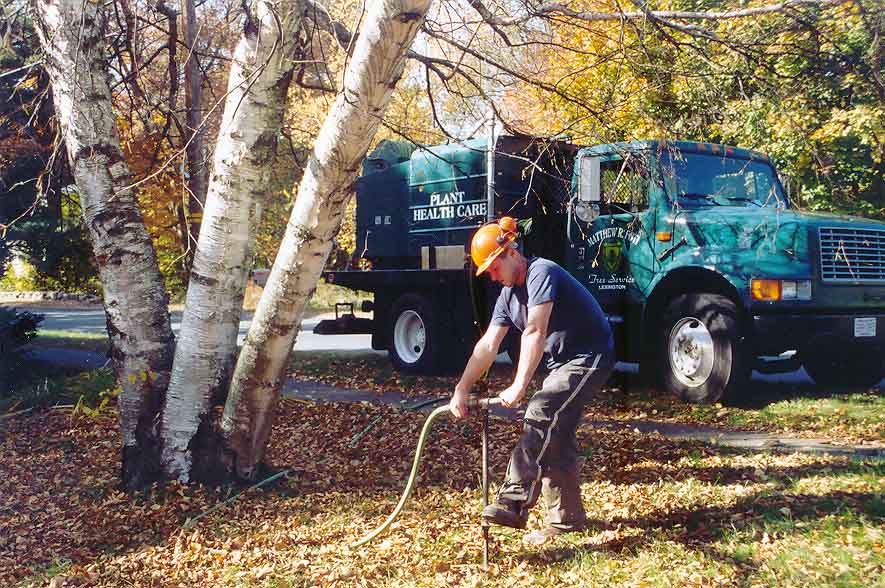
Tree Care
Pruning
There are many misconceptions about what pruning consists of. The Foti philosophy is that we prune to enhance the natural shape of a tree or shrub and not try to change that shape. It is important to know the natural shape of the many plants that grow in New England prior to pruning, and this knowledge can only be obtained through years of experience. Instead of trying to create a shape by pruning, there is likely a tree or shrub that naturally has that shape. Proper plant selection can help save on annual pruning maintenance.
Shaping and/or shearing trees and shrubs are also acceptable methods, particularly in more formal landscapes. However, plant owners must understand that pruning actually promotes growth instead of slowing it down. Shearing should occur annually to maintain plant form and proper timing is crucial particularly on flowering plants to ensure that next year’s flower buds are not removed.
Reasons to prune include: Health, structure, appearance, safety, corrective work, vista, size reduction, disease control, clearance on structures and utility lines, and fruit production.
Tree Cabling
Storm damage on multi stem trees can often be prevented with the installation of steel cables. Foti Landscape stocks a full line of hardware and cable sizes for any tree size from small ornamentals to large shade or evergreen trees.
Fertilization
We suggest that tree and shrub fertilization be done every 18 months, alternating materials in spring and fall to support the tree’s natural processes. Spring fertilization has higher levels of nitrogen that enhances a plant’s foliage. The next phase is in the fall, 18 months later, and uses higher levels of phosphorus and potassium that enhance root and flower development. Enhancing a plant’s root system with fertilizer makes it more drought tolerant and less vulnerable to winterkill. We feel that our 18 month schedule provides a conservative, well-balanced approach to fulfill the plant’s needs.


